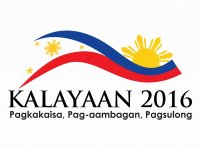Jmrie_
in memoriam 1995-2021
- Joined
- Aug 21, 2017
- Posts
- 104,956
- Solutions
- 1
- Reaction
- 53,216
- Points
- 27,061
- Age
- 28
If you’re a true-blooded Filipino, you know how significant June 12 is to the Philippines. For those who don’t know, it’s only the country’s Independence Day. June 12, 1898 was the day Emilio Aguinaldo declared Philippine independence in Kawit, Cavite. Witnessed by a huge crowd, this day was the first time the Philippine flag was raised in public. Emilio Aguinaldo then became the first president of the country.
 Every year, June 12 is highly celebrated in the country as well as in other countries around the world with Filipino communities. This year, the Philippines will be celebrating 120 years of independence. The anticipation is evident almost anywhere. You’ll start to see flags decorated in the streets, malls and You do not have permission to view the full content of this post.
Log in or register now., even on vehicles.
Every year, June 12 is highly celebrated in the country as well as in other countries around the world with Filipino communities. This year, the Philippines will be celebrating 120 years of independence. The anticipation is evident almost anywhere. You’ll start to see flags decorated in the streets, malls and You do not have permission to view the full content of this post.
Log in or register now., even on vehicles.
In commemoration of this national holiday, here are some interesting facts (some less-known to many) that you should know about Philippine Independence Day.
enjoy reading
source
You do not have permission to view the full content of this post. Log in or register now.
 Every year, June 12 is highly celebrated in the country as well as in other countries around the world with Filipino communities. This year, the Philippines will be celebrating 120 years of independence. The anticipation is evident almost anywhere. You’ll start to see flags decorated in the streets, malls and You do not have permission to view the full content of this post.
Log in or register now., even on vehicles.
Every year, June 12 is highly celebrated in the country as well as in other countries around the world with Filipino communities. This year, the Philippines will be celebrating 120 years of independence. The anticipation is evident almost anywhere. You’ll start to see flags decorated in the streets, malls and You do not have permission to view the full content of this post.
Log in or register now., even on vehicles.In commemoration of this national holiday, here are some interesting facts (some less-known to many) that you should know about Philippine Independence Day.
- Filipino priests started the movement for independence.
- Filipinos formed a secret society to rebel against Spain.
- According to Julian Felipe, Philippine independence was proclaimed on a Sunday afternoon, between 4 to 5 PM.
- Spain and the U.S. did not recognize Aguinaldo’s declaration of independence.
- Philippine Independence Day used to be celebrated on July 4.
- Emilio Aguinaldo himself designed the Philippine flag.
- The three stars in the flag originally stand for Luzon, Panay and Mindanao.
- The flag’s colors (red, white and blue) were a salute to the American flag.
- The colors of the Philippine flag can be used as signals.
- There was an earlier version of the National Anthem but Emilio Aguinaldo preferred something different.
- The first Philippine anthem was commissioned by Andres Bonifacio.
- The original copy of the Proclamation of Philippine Independence is kept in the National Library.
enjoy reading
source
You do not have permission to view the full content of this post. Log in or register now.
Attachments
-
You do not have permission to view the full content of this post. Log in or register now.
Last edited: